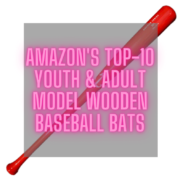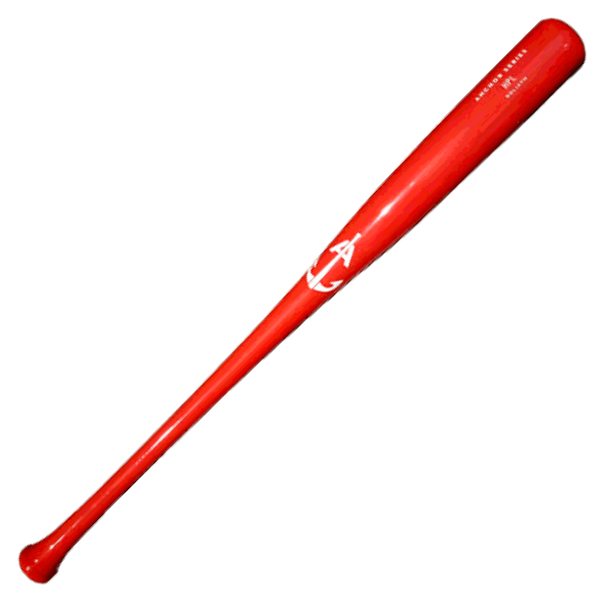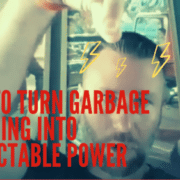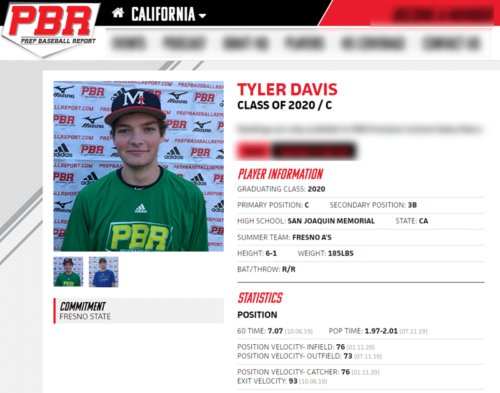Baseball Hitting Trainer Interview: How To Transition Cage Swings To The Game With Curtis Nelson
Here’s some of what will be discussed in this baseball hitting trainer interview with Curtis Nelson:
- Rapsodo getting used as a paper weight?
- What are the top two mistakes that you see coaches doing when they’re teaching hitting?
- Random pitch training. Explain that a little bit, how you guys do that, and how that looks…
- How to transition grooved cage swings into the game
- Do you teach your hitters any kind of plate or pitch approach?
- How do you evaluate hitters and teach them to make an adjustment?
- How do you get a pull happy hitter go oppo, and how do you get an oppo happy hitter pulling the ball?
- “Curtis, so and so said that timing cannot be taught?” What do you think about that?
- What are some of the adjustments you have hitters make to slow pitchers?
- Where can people who want more information find you?
The following is the above video’s baseball hitting trainer video transcription. Let’s get to it!
Joey Myers 00:27
Very cool. How did today go?
Curtis Nelson 00:30
It went well. I got a couple guys actually in town from AZ, that was fun and got some good work in, so today went well. My internet was not working at the end there, so always fun but I’m not a big tech guy so the tech stuff for me sometimes gets me a little fired up.
Joey Myers 00:50
What were you using the internet for? Were you just showing them some baseball hitting trainer video and stuff?
Curtis Nelson 00:54
Yeah, so I send a lot of videos from here. When I make either a voice over video or I make myself showing a drill or something, I send from the cage. I try and get most of my work done here. We got a nice little like 6000 square foot cage here.
Joey Myers 01:10
Beautiful.
Curtis Nelson 01:11
370 foot cages with 20 foot ceilings and 25 foot nets. It’s kind of a fun little one. It’s kind of our little home, it’s old school. My boss played at LC state, he has been doing this in the state of Washington for years and years and years and years. He’s got a little bit of that old school, so “you don’t like that cookie cutter” kind of look, you know?
Joey Myers 01:32
Yeah. I agree you guys don’t have HitTrax or any baseball hitting trainer like that either.
Baseball Hitting Trainer: Rapsodo getting used as a paper weight?
Curtis Nelson 01:37
Conforto bought me rapsodo, I’d say four years ago now, kind of when it first started coming out. He went out and bought it for me and just kind of gave it to me and I use rapsodo occasionally. I think that you know for some of my young ends or some of my high school guys, I want to go to a PAC 12 school and I don’t know any Pac-12 guys that are below 90 miles an hour on their exit velocity. I think it’s good to be able to show them that obviously with recruiting videos nowadays and in a lot of these colleges are asking for it right? I think that is an important metric.
Curtis Nelson 02:12
Obviously, if you make a swing adjustment and your exit velocity drops a big amount, there’s probably something behind that right so I think that there’s a time and place but in my experience with hit with rapsodo I’ve seen a lot of really good-looking swings and then when they go on rapsodo it starts becoming a little bit more of a slow-pitch softball home-run Derby, but as long as we’re using it the right way.
Curtis Nelson 02:35
I like to use it when I’m doing mixed BP. I like to do it when it’s more of a live setting. You know, we have our pitching rapsodo set up in our hitting rock solo setup in the same cage and we’re doing live stuff, you know, closer to the season time. I think there’s a lot of value there but most of the time a rapsodo is kind of getting used as a paperweight.
Joey Myers 02:52
An $8500 baseball hitting trainer paperweight?
Curtis Nelson 02:57
Yeah, I think that the first one we got was like five grand or 4500. Whatever. Not the second one, but that’s a very expensive paperweight change.
Joey Myers 03:06
Exactly. I’ll keep this in, sometimes it depends on what we talked about before just to get warmed up. I’ll keep it in. I think I’ll keep that stuff in. But are you ready for an official start?
Curtis Nelson 03:18
Yeah.
Joey Myers 03:19
Alright, let’s do it. Hello, and welcome to swing smarter monthly newsletter. This is your host Joey Myers from hitting performance lab dot com and with me today is actually our first intro. We had a little phone call earlier today but I’ve heard so much about Curtis Nelson, through a mutual friend Daniel Robertson, I call him D. Rob and Daniel was hitting with Curtis quite a bit in the off-season, this past season that he played in not just last year, but the year before. I think the year before, I think it’s been a couple years but I’ve heard Curtis through D Rob and there’s a lot of mutual hitting minds that surround Curtis. First of all, I want to welcome you into the show. Welcome, Curtis.
Curtis Nelson 04:01
Thanks for having me on. I look forward to it.
Joey Myers 04:02
Thanks for coming on, man. Okay, cool. We had a little conversation, which I’m going to keep in like I said, about rapsodo and different things and got to see your cages, just kind of cool. One of the questions that I wanted to ask you since I’ve seen a lot of your stuff on Twitter, and I agree with I think most of it. You’re one of those guys, we call them lone wolf, mad scientist and the guys that tend to think for themselves and don’t follow others lockstep, right?
Joey Myers 04:06
You take a little bit of something, somebody’s saying, “Hey, I think that works. Let’s go try and experiment with my hitters and see if that’ll work with them”. If it does, you keep it, if it doesn’t, you throw it away. I’m really looking for those lone wolves, the ones like myself, who are on like a passionate curiosity journey to try and find what the truth is what really works. My question to you is, what are the top two things, baseball hitting trainer mistakes that you see out there on whether it’s Twitter or social media, that you see coaches doing when they’re teaching hitting?
BREAKING NEWS:
Grab two chapters of our NEW Amazon book FREE...
"Swing Smarter: Science Based Hitting Training Built To Understand How, Why, & Reasoning Behind It"
What are the top two mistakes that you see coaches doing when they’re teaching hitting?
Curtis Nelson 05:05
I think the first one to me kind of goes back to at a very young age, kind of what is the typical things taught with very young hitters. You’re typically going to see, you know, take the weight back, take the hands back, as a pretty generic kind of thing taught. I think if you look at a lot of really good swings, there’s so many different guys out there, I love all their swings and their different commonalities but at the same time, I think you see so many hitters that have this certain sequence involved in when they get to a certain position.
Curtis Nelson 05:40
You see, some hitters might have a certain movement in their swing that might be different, but it works for them. I think at a young age, you see a lot of hitters with a big movement backwards, a huge hand load getting outside the body. It just starts to create these habits at a young age that can really start to affect us as we get older and pitching gets better.
Curtis Nelson 06:02
I really like to see limiting the amount of move, we go back and allowing our hands to kind of get to a good hitting position. More on the forward move, we don’t want it to be rushed, we don’t want it to be something that kind of jerky, it might feel that way for someone and feel smoother for another person. That’s the individuality about it.
Curtis Nelson 06:23
Ultimately, I think that that would be like my number one thing, I see is so many hitters come in, and they’re constantly with a big shift back, a big hand load on the way back and they’re constantly fighting their bodies. That’s the number one for me. We talk a lot about not chasing results and chasing exit velocity. I think at the exit velocity side of things is something that’s important for hitters to know and understand the end.
Curtis Nelson 06:25
Like we were saying before, if you see a big drop in exit velocity, you see a big drop and how the balls coming off the bat, and then there’s some rolls there for us but I see a lot of hitters, a lot of young hitters nowadays on the internet, that are trying to chase results instead of chasing the process that brings about the results.
Curtis Nelson 07:09
Everything for me is about getting hitters better in the game, we have to be better hitters in the game, whatever we’re doing inside in terms of training that needs to translate to the game. If whatever you’re doing, whatever style or thoughts you’re doing, or however your training is translating to the game outside, and you’re a better hitter because of it, then great, we’ll work our way around those things to a certain degree and make sure we understand the difference.
Curtis Nelson 07:35
I think those are my top two things right now, it’s making sure that whatever we’re doing is going to translate to the game. That’s all that matters. We don’t want to be caged hitters; we want to be gamers.
Joey Myers 07:43
Right. I know one thing when D Rob was training before his last year in independent ball, he was doing with you guys, you mentioned it here too, it’s the baseball hitting trainer random pitch training. Explain that a little bit, how you guys do that, and how that looks.
Random pitch training. Explain that a little bit, how you guys do that, and how that looks…
Curtis Nelson 07:58
I started doing it as a player when I was young myself and one of my good friends, Cody Atkinson, he’s with the Texas Rangers as a coach now. We started doing it as players and it was just our best way to emulate game pitching. It was just doing mixed BP, we always call it dirty from 30, about 30-35 feet away, we’re not trying to throw as hard as we can, it’s just a crispy BP fastball. We’re just mixing and breaking balls and really just kind of playing games against each other, you go play nine inning game and you get three outs and you will be judging jury and it brought about some good competition between us.
Curtis Nelson 08:34
Ultimately, it taught us how to have an approach, how to be on time than the fastball, how to adjust off the fastball, on some breaking ball stuff. I think it really shows the holes in the swing, it shows where the weaknesses can become and some guys that it might even just be the mentality change, that might be the difference.
Curtis Nelson 08:51
You can see a lot from just doing just kind of a mixed BP, can I cover the fastball away and still cover the breaking ball? Can I cover the fastball in and still take the curve-ball down in a way and it shows this a lot. I’m a huge proponent of it.
Curtis Nelson 09:06
We do our machines, we do our challenge stuff, because I can’t throw the ball 90 miles an hour, but at the end of the day, we do need to see it, that live arm and that kind of mixed it in having to make a decision rather than to seeing a fish down the middle every time on a machine.
Joey Myers 09:21
Very smart and there was a baseball hitting trainer study that was done, I can’t remember the guy’s name offhand on YouTube, but it was a video, not sure. I think it was maybe in one of the books that I’d read but it was a Cal Poly study. It was Cal Poly baseball guys, and it took half the hitters out in the field hitters, they worked with what they call mass practice.
Joey Myers 09:42
They did 15, they took BP where they took 15 fastballs, they hit 15 fastballs, hit 15 curve-balls, hit 15 change-ups and they had the other half of the hitters, fielders, did what you’re talking about a mix of BP and even though the second group that got the mix BP early on wasn’t very good, they’re showing a BP wasn’t very good.
Baseball Hitting Trainer: How to transition grooved cage swings into the game
Joey Myers 10:03
What ended up happening is they got better as the season progressed, and their numbers were better, which you’re talking about transitioning into the games, which I hear I’m sure you do, too, from parents and even players, how do we transition these mechanics into the game? Because we’re seeing a great swing in the cage, but then in the game, they’re not really performing and that baseball hitting trainer study what you’re talking about mix BP, I think it’s one of the most important things and that’s a study that shows right there. That was just one season but I bet if you took it over three, four or five seasons, you get the same result, it would just obviously look a little bit different.
Curtis Nelson 10:40
It comes down to kind of open skill and close skill environments, right. In golf, the balls not moving, it’s a very close type skill. We kind of know our outcome before it happens and it actually leads in this to one of my pet peeves, and I grew up hitting like this. You see the outside pitch, and you immediately are trying to go off with it and manipulate that result, where the only thing that dictates where that ball goes is my timing.
Curtis Nelson 11:08
One of the first things I tell hitters, when they walk in the cage with me is, I’m never going to tell you the pull of the inside pitch, I’m never going to tell you to hit the outside pitch the other way, your timing will tell you, your job is to hit through it, and just kind of see what happens and then you can make adjustments off of that.
Curtis Nelson 11:22
That open skill environment of having to basically variable change, you have to have the ability to be on the fastball and then adapt and adjust. I think so much of hitting is about that adjust-ability because how often are we right on time? How often are we perfect, guys in the big leagues, there might be perfect 30, 40, 50 times in a year, and getting paid a lot of money for it, but we’re not getting five 600 at bats, so we have to be a little bit more adjustable, to a certain degree at a younger age level.
Curtis Nelson 11:52
He’s breathing that into them and a younger age level, to have that ability to naturally translate over to the game. A lot of hitters that I see that struggle on that transition from cage to game, they’re doing a lot of machine where it’s in the same place every time, they’re doing a ton of Tee work, a ton of flips, we don’t typically use these in here very often, very, very rare.
Curtis Nelson 12:15
With younger guys, I will, but a lot of times with my college and my professional groups that are coming in, we’re really not using Tees at all, because we want to see the ball moving, sometimes we’ll use a tee for a feel and kind of maybe a specific drill. As a whole, we want to see that thing moving and having to make a decision soon. Just hard, soft flips, or fastball, curve-ball, mix BP or full on, dirty from 30.
Curtis Nelson 12:41
Anytime you get an opportunity to do that, you’re going to be playing the game of baseball in that environment much more like outside, right? It’s going to translate over better. When it doesn’t translate over, now you can start looking at some of those pieces within the swing that might play a role with why it’s not translating over or in the head, you know what I mean in terms of mentality.
Joey Myers 13:01
Do you guys do any kind of baseball hitting trainer approach? You were mentioning, if the ball is away, you don’t have to spray it away, you can pull that ball and my last year in college at Fresno State, we got the new coach, Coach Batesole. Now my last year is 2003, I wasn’t a part of the 2008 College World Series team, but he was a coach at that time.
Joey Myers 13:22
My last year was his first year and one of the things he told us, and the first time I had learned this, was to have two thirds away or two thirds in approach. Two thirds of the plate away or two thirds in, now we just go half, we go half away or half in. That’s how we do it now with my hitters.
Joey Myers 13:38
That was the first time I had heard that to split the plate into two thirds and he said if you’re looking two thirds away, as a righty, he said you can work left center-field all the way to right field. Anywhere in there, you can hit the ball, you don’t have to hit it straight to right and the opposite is true. If you’re looking two thirds in, then you can work right center all the way to left and that was the first time I heard that because most of my coaches would say if it’s away, boom, hit it over there. Hit it where it’s been, you guys do any kind of approach like that?
Do you teach your hitters any kind of plate or pitch approach?
Curtis Nelson 14:08
Through the years of doing this now, you’ve seen them all right, there’s so many different approaches. I think that as long as whatever we’re thinking is working, then great, do it but at the same time I think that thinking in general, we talked about open skill, close skill environment, hitting is one of the most purely reactionary sports there is, in terms of hitting a baseball, it’s moving, that can change direction and speed and everything.
Curtis Nelson 14:33
Sometimes approaches, it’s almost too much thinking for some hitters. We’ve done the whole look away reacting, we’ve done the even counts, you’re looking middle away, the positive counts, you’re looking middle in. In the past, I’ve talked about going to your strength is you got a positive count, if your strength is middle out, then look there, then drive into the big part of the field. If you like pulling the ball in your better middle, middle in, in that count looking at those places that you have success.
Curtis Nelson 15:03
I think the best hitters in the world in terms of the best swings and approaches, they can game plan their approaches off the pitcher. If you don’t have any holes in your swing, now you can go off of what the pitcher’s weakness is. Generically, people tend to look at what the pitchers out pitches or how he’s trying to beat you. We try and counteract that instead of going well, how is he going to get ahead of me to get to that point?
Curtis Nelson 15:27
If I’m looking middle in because he’s going to beat me there, but he actually gets hit up in a way then maybe I’m looking up in a way, and I’m going to own that zone based on the guy I’m facing. Now, when you start getting into game planning based off pitchers, you got to have spin rates, you got to have a scouting report of how he is, as a pitcher in general.
Curtis Nelson 15:46
If we don’t have that information, we got to keep it pretty simple. With driveline and what they’re doing with the pitchers nowadays, in terms of tunneling pitches, and making pitches look the same for a longer amount of time, the game is not getting any easier. We want to know where to look.
Curtis Nelson 16:05
We talk a lot about arming pitchers way off to the side more three-quarter arm slot, you should be looking up and out for that guy, you facing Bumgarner, and he’s throwing the ball from second base, we want to be looking up and out, because the ball is coming from that direction, and I think a lot of people make the mistake. It works at a younger age level when the ball is not moving as fast but a lot of people make the mistake of looking at the plate, because not always where it starts is not always where it’s going to finish based on what kind of movement they have.
Curtis Nelson 16:34
Oftentimes, you’re looking middle in and out a hand it looks middle in, and then it’s going to hit you in the hands, or you’re looking middle away, the next thing you know, you get a slider into the batter’s box that you chase. We try and kind of counteract what we’re facing, by how and where we’re looking, to a certain degree, obviously, that depends on the level you’re at.
Curtis Nelson 16:53
With some of my younger teams, we’re trying to keep it as simple as possible. A few years back with one of my teams, we had some pretty darn good hitters and some good swings, we ended up just kind of taking the approach of doesn’t matter what count it is, if it’s a strike, let’s smash it, and just kind of the old see-ball, hit-ball approach, and just make sure we’re on time and adjustable from that point. We had a lot of success with that.
Curtis Nelson 17:16
We basically said, we’re going to flat out own the zone, and we’re going to take balls, and the guys were mature enough to go do that, some hitters need to be a little bit more specific about how they think. I always go full circle with things and making them more individually based for the hitter, right? If I got a hitter that flat out pulls the ball, like there’s no tomorrow, and is a really good pole hitter, then that’s probably where we’re going to look because probably something that you can pull to a certain degree, especially early in counts but that also limits him on his ability to adapt and adjust to what he’s facing to a certain degree.
Curtis Nelson 17:50
To kind of get that complete hitter, the swings got to be able to kind of withstand different zones, different timings and different angles of pitch, to be able to game plan fully, I think the better the swing, the easier it is the game plan off the pitcher and that’s ultimately what we’re trying to do.
Joey Myers 18:06
With your young hitters, and I know you when you say that, if you got a hitter, that’s just dead pole and if that’s a strength, you’re probably talking about the older guys, whether it’s high school, college, on up. What about the younger guys? Do you have more of being able to use all field approach, and if so, if you have them set up like what we do, we do small private groups. We have between two and four hitters in a group, with the whole COVID thing, we used to do six, but I try and keep it to four at the max and we’re pretty spread out outside and stuff.
Joey Myers 18:38
What we do is we set up the tee at the beginning, we take our baseball hitting trainer ball exit speeds, but what I’m also looking for is not only the number, but I’m looking for we set that tee up, it’s center center. They should be hitting it right up the middle, right? What I’m looking for and I’m observing is if they’re pulling all five swings that they’re going to get or they’re going the other way, all five swings, where it’s center center, do you do anything like that and eval and try and get them to make an adjustment?
BREAKING NEWS:
Grab two chapters of our NEW Amazon book FREE...
"Swing Smarter: Science Based Hitting Training Built To Understand How, Why, & Reasoning Behind It"
How do you evaluate hitters and teach them to make an adjustment?
Curtis Nelson 19:05
Not so much of the tee. We film everything, I’ll film a rear-view angle, so I can kind of see ball flight, I can see timing, posture, hand path and we’ll do a side view. I’ve always gone to the film, you look at contact points, you look at when the barrel is coming out, you look at timing, and then you look at what’s coming off, right? You’re taking middle pitches, and you’re just hooking them every time into the net, the film is going to show you that you’re around and outside that ball pretty early.
Curtis Nelson 19:34
Ultimately, we want a hitter that can cover the line. I want somebody that can drive a ball, dead straight off, and the ball flies straight with backspin, and then all of a sudden that pitches inside or they’re a little bit early and they can pull it with true fly. Especially in Washington state, we get a lot of hitters that only hit when they’re inside until the game because there’s just not a lot of fields out there that you can hop on and just a lot of hitters are just doing indoor lessons and practicing inside. They just don’t see the ball flight as well.
Curtis Nelson 20:04
That’s where the wraps around the hit tracks can be nice in terms of being able to really truly see where that ball is going. Also, with how cages are built, right, we have these tunnels in cages where we get this tunnel vision going, where a lot of hitters will come in and just pepper their back-net pepper right center, and not pull a single ball into the net.
Curtis Nelson 20:13
We had a lot of hitters in Washington that just pushed the ball in the right field. Learning how to pull the ball correctly, or learning how to drive the ball opposite field correctly. It’s different for everybody, but ultimately, I rely on the film, in the flips. I’m not doing a lot of the tee stuff but if you find value in something, by all means, do it.
Joey Myers 20:45
Now, if you were going to teach a guy, if he was pulling everything into the left side of the net, or even going off way too much, how do you get an Oppo person to learn how to pull the ball? How do you get a pull person to learn? What’s your go to drill for that?
How do you get a pull happy hitter go oppo, and how do you get an oppo happy hitter pulling the ball?
Curtis Nelson 21:00
It depends on what the reason is, whether it’s just a mentality thing. That’s where I tapping into each hitter, in learning your hitter and understanding what their thoughts are, what they’re trying to do. You can compare that to the film, we have something called a deep dive, where you kind of dive into the analytics a little bit in terms of professionals. You go look at all the analytics, then you compare it to game film, then you compare it to the indoor cage routine stuff.
Curtis Nelson 21:28
If you have all that information, it starts to paint the picture a little bit of why they might not pull the ball in the air as well, or why they might be pushing the ball off. Ultimately, I think that I’m going to look at the film, I’m going to look at how they’re moving. Obviously, like what you were talking about is putting them on that tee and getting a feel for.
Curtis Nelson 21:49
This was D Rob’s argument to me about the tee stuff because he loves the tee stuff. That’s where I told him, at the end of the day, if that is a routine that has built you, you’re finding comfort in a certain position, that maybe you’re not feeling when the ball is moving, by all means getting on a tee and feeling that contact point out or hitting the ball deeper in the ball more out in front, based on what you’re trying to create, you can gain a feel in that atmosphere.
Curtis Nelson 22:14
I’m not saying that I’m against tees by any means but I’d much rather see the ball moving and how they respond to it moving with some film on it, so we can kind of see that overall picture. I think it’s going to be different for every hitter based on what they’re thinking, based on what their mechanics are and then obviously comparing that to the results or any kind of data that we do have, but that’s a good question, I like that.
Joey Myers 22:38
One of the baseball hitting trainer things I hear a lot of what you’re talking about is timing. There’s a lot of people out there, believe it or not, that say that timing cannot be taught. What would you say to that coach, instructor, parent, that hears that, comes to you and says, “Curtis, so and so said that timing cannot be taught?” What do you think about that?
“Curtis, so and so said that timing cannot be taught?” What do you think about that?
Curtis Nelson 22:58
I teach timing every day, every single day. Some hitters are going to grasp some concepts better than others, and some hitters have that ability to be on time more consistently, whether that’s because of their swing, or because of their athleticism, their hand eye coordination, whatever it is, they have a gift to show up on time more than others.
Curtis Nelson 23:23
I would say 95% of the hitters that come through my cage, getting them aware of their move, whether it’s improving the move first, and then making them aware of their move in relationship to time and space, is one of the most important things that I do. I truly believe there are hitters out there that just time naturally, and it’s very natural for them to do so.
Curtis Nelson 23:46
They don’t need to understand their timing, they just show up on time more often than others. For every one of those guys, there’s 150 to 1000 of the other guys that need to understand their timing. We do a lot of timing stuff in here, just really a lot of rear-view films to kind of show hitters, when are you picking up in relationship to where the pitcher is.
Curtis Nelson 24:06
When I was growing up, it was all about getting your foot down early, get your foot down early, get your foot down, and that’s all we ever heard when we were late, that can breed a lot of issues. If you got a swing like Rendon, or Nelson Cruz or Paul Goldschmidt, that is a different type of stride.
Curtis Nelson 24:22
You still see them have a good feel of time, they get that foot down and then the body shifts back to center to a certain degree to hit, everyone’s a little bit different on that aspect. Ultimately, I think rhythm and flow, that we talked a lot about flowing, a lot about dancing with the pitcher. Those are some pretty simple terms that can apply to timing but if you can arrive on time to a good fastball and then you can still have adjust-ability on breaking balls, we got a great opportunity to hit in the game and having markers in the swing or the pitcher.
Curtis Nelson 24:53
Whether it’s some guys like to go on handbrake or some guys like to make their move on arm up or other guys like to just game plan off of “Hey, I’m ready to pull the fastball, even though I’m not trying to.” There’s different ways around that to get somebody on time but making hitters more aware of their timing when they’re on and when they’re off or when they’re late or they’re early, is a really, really crucial piece to what we do here.
Joey Myers 25:18
Before we get to where people can find a little bit more about you, we’re kind of closing in here, I want to ask you just one more question on that. If you got some young hitters that come in, think about the team that you’re talking about that have the young guys where they’re just basically swinging strikes, take balls, if they’re facing a really slow pitcher, which tends to happen quite a bit where the pitcher can break a pane of glass, what are some of the baseball hitting trainer adjustments that you have them make or go through?
Baseball hitting trainer: what are some of the adjustments you have hitters make to slow pitchers?
Curtis Nelson 25:42
It’s such a good question. I love answering this question. I think that when I was younger, the generic and you still hear it with hitters, you still hear with coaches, whatever ones taught against that soft lefty. I remember showing up to the field, and we’re facing a PAC 12 recruit throw in 93-94. I’m like, we’re going to score 10 runs today, because we hit this guy like there’s no tomorrow, we prepared for this. You show up, and you face that soft lefty throwing 75 and I’m like, I don’t know, if we’re going to have a hit today, it’s a bad feeling.
Curtis Nelson 26:11
When I was growing up, you saw the slow guy warming up and you’re like licking your chops. Well, I’m about to be free for a couple doubles and a home run and that guy usually didn’t make it out the first ending. I think it goes into kind of training nowadays is a lot of machine, a lot of velocity, a lot of that stuff. We’re better against firm, but I do think that the approaches, and the way we’re taught against those guys can really play a role.
Curtis Nelson 26:12
Growing up, we were all taught to hit that guy off and push that ball into right, hit it off, let it travel, see it, the start your rhythm later, make a forward move later in the process, however you want to say it. That actually is what the lefty pitcher wants you to do, I want you to be defensive, he wants you to push them all off. He wants you to weight back on him.
Curtis Nelson 27:00
The best approach against the soft guy is to shrink the zone, make the zone smaller. He doesn’t have the ability to strike you out unless you chase his pitches, and you’re going to see his pitches better because the ball is moving slower, we see the ball better when it’s moving slower, you can’t argue that.
Curtis Nelson 27:16
At the end of the day, if you shrink your zone and go, “Hey, I’m going to be here, this is my goal zone against this guy. I’m not chasing those pitches out there”. Even if they look hit-able moving slower, I think we’re going to have a lot more success doing that, we’re not necessarily trying to go off, but we’re not trying to go up there and roll over to third first pitch either, I think it’s really just commanding your zone and kind of going back to the simplicity of just trying to hit through the ball and see where it goes.
Curtis Nelson 27:41
I think we tend to manipulate the swing because of what we’re facing, that slow guy is like, “I’m hitting a home run against this guy”. We’re spinning off that slow when away, but we tend to beat ourselves more than maybe they beat us. We try and stay away from the generic hit the ball up against the slow guy kind of mentality. The end just kind of stick to say, “Hey, this guy only beats me if I chase, so we’ve got a good pitch to him.”
Joey Myers 28:07
That’s funny you say that because that’s the same with the same lefties that we’re seeing, that can’t break a pane of glass, you see the guy throwing 93-94. 93-94, it’s Friday night, and then Saturday night, you see the guy can break pane of glass and the way I’m going to just pepper it to the opposite field, but one thing he is slow anyway, so you can have to wait longer and then now you’re saying that you want to hit it the opposite field, and now you got to wait even longer. You got to see it even deeper, it’s almost like it’s two double negatives there. I get that. You’re chasing your tail, basically.
Joey Myers 28:42
Curtis, I appreciate your baseball hitting trainer time. Where can people find you? I know you’re on Twitter, because that’s where I’ve seen you. If you guys have a website, where you guys are in Washington, if anybody wants to come out and check you guys out, where can more people find you.
Where can people who want more information find you?
Curtis Nelson 28:58
Our cage out here it’s called Atkinson Baseball Academy. It’s out in Kirkland, Washington. I know there’s a website for the cage. I am separate from that in terms of my hitting instruction. I am on Twitter, it’s @Nelson_Hitting, used to be cheat hack nation. That was kind of a joke that we threw together when I first developed because of all the swings we’re seeing that were a little bit aggressively big. I don’t have my own personal website, I probably should by now, but I spend majority of my time in the cage with hitters, so the internet and social media side of things, I’m still relatively beginner at that. I would say Twitter is the best way to reach out if you have anything, just shoot me a DM and I’ll get back to you as soon as I possibly can.
Joey Myers 29:49
Maybe not 100% probability but you can take a baseball hitting trainer like yourself who’s always in the cage doing stuff. You can take where somebody like you, you think he’s got 20,000 or 100,000 followers because it’s great stuff, if you read your stuff, you watch the videos that you put up and think it’s awesome stuff and you should have like the 50,000 100,000 but the reason you don’t is because you’re not on Twitter all the time, you’re in the cage, working with hitters, so that’s always not always a sign of a good hitting coach but I would say more likely than not, guys like Matt Piers and Jeremy Johnson, they don’t really have big followings but they got great gyms that they put out there and can really help hitters. I really appreciate what you guys are doing out there in Washington, keep up the great baseball hitting trainer work. If you see D Rob before me, say hi to him. I think he’s up in Seattle, he still lives in Seattle?
Curtis Nelson 30:45
Yeah, he’s over in West Seattle. They got a bridge out so that is a pain in the butt to get out of West Seattle right now, but he’s over there. He pops in the cage, he comes, he hangs out. His experiences and his knowledge is just bar none. He’s been doing it for so long. It’s a lot of fun getting that guy in the cage and kind of just talking.
Joey Myers 31:05
He’s a baseball hitting trainer Yoda for sure. I know he wants to be a GM and I can see that he’s got the chops on the field, he understands intellectually the game and like you said, it’s fun to talk with him. So, tell him hi for me if you see him before me. How far is Kirkland from Seattle? How far are you guys away?
Curtis Nelson 31:27
Very close, if you take away traffic. Right now, with COVID and everything, the freeways aren’t as crazy out here right now. You take away traffic, I can get over to West Seattle, it’s kind of over by the airport, you can get over that direction in 20 minutes, 15 to 20 minutes, but you throw in the traffic of the normal out here, you’re looking at probably more like an hour and a half.
Joey Myers 31:50
Got you. Cool. All right, Curtis, well, I’ll let you go, man. Thanks again for your time and Merry Christmas to you and the fam.
Curtis Nelson 31:58
Merry Christmas, you guys take care. My pleasure. Thanks for having me on.
Joey Myers 32:01
You got it.
BREAKING NEWS:
Grab two chapters of our NEW Amazon book FREE...
"Swing Smarter: Science Based Hitting Training Built To Understand How, Why, & Reasoning Behind It"





































